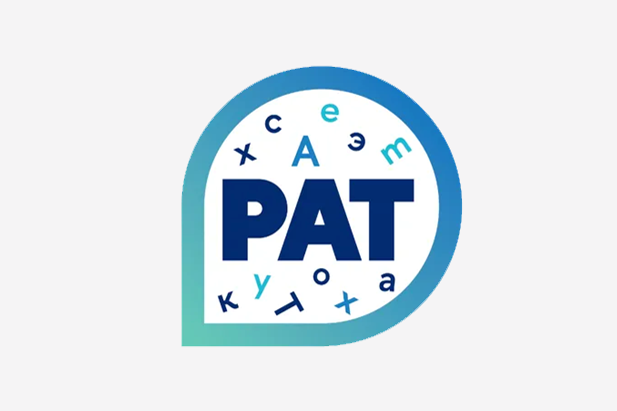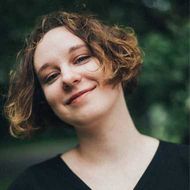HSE Scientists Develop Application for Diagnosing Aphasia

Specialists at the HSE Centre for Language and Brain have developed an application for diagnosing language disorders (aphasia), which can result from head injuries, strokes, or other neurological conditions. AutoRAT is the first standardised digital tool in Russia for assessing the presence and severity of language disorders. The application is available on RuStore and can be used on mobile and tablet devices running the Android operating system.
Approximately 450,000 stroke cases are reported annually in Russia, with about one-third of patients developing aphasia. Aphasia is an acquired language disorder. A person with aphasia may struggle to understand others, speak, read, or write. Aphasia can result from brain damage caused by stroke, head injury, or tumour removal. Physicians diagnose aphasia based on clinical symptoms and neuropsychological assessment data. Timely diagnosis of aphasia is crucial, as working with a speech therapist and neuropsychologist can significantly accelerate language recovery and improve quality of life.
Researchers at the HSE Centre for Language and Brain have developed a standardised digital tool called AutoRAT (from the Russian Aphasia Test), enabling the detection of aphasia and the assessment of its severity. When creating materials for the application, the developers considered not only the linguistic characteristics of the words, sentences, and texts included in the stimulus set but also psycholinguistic factors. These factors included, for example, the age at which the words were learned, their frequency of use, how easily a person can visualise an object associated with the word, and the complexity of images related to specific stimuli. The AutoRAT application allows diagnostics to be completed in just 60 minutes, providing accurate data for the development of a rehabilitation programme.
The battery of language tests includes 13 different tasks that assess the preservation of all key linguistic levels: phonological, lexico-semantic, syntactic, and discourse. These tasks help identify deficits in comprehension, production, and repetition of speech, provide information about the overall severity of language disorders, and allow comparison of results with age-based norms.
Language comprehension tasks, such as distinguishing sounds and understanding words, sentences, and texts, are automatically processed within the app. To obtain results for tasks involving speech production and repetition—such as naming objects and actions, constructing sentences and stories from drawings, and repeating words and sentences—a detailed manual evaluation system was developed for the user. This allows for the identification of all aspects of language disorders in each participant.
Individual participant profiles are saved in the application for further analysis of the results. AutoRAT enables tracking of the dynamics of language recovery, allowing for the assessment of treatment effectiveness, which is crucial for future prognosis and selecting an appropriate rehabilitation programme. All results are available for download in table format, making them convenient for research purposes.
AutoRAT will be a valuable tool for speech therapists, neuropsychologists, researchers, and clinical specialists. Additionally, it will be useful for healthcare institutions, students, and teachers in medical and linguistic fields, developers of rehabilitation programmes, and research centres focused on cognitive and linguistic processes.
'We aimed to create a tool that would not only help specialists diagnose aphasia but also provide a comprehensive picture of language disorders. AutoRAT is a step toward more precise and personalised patient rehabilitation. This tool combines a strong theoretical linguistic foundation with practical advancements in the field of speech therapy. Our tool enables a detailed description of the core language deficit, making the diagnosis of aphasia even more accurate,' comments Olga Buivolova, one of the project participants and Research Fellow at the HSE Centre for Language and Brain. 'It sets new standards by integrating advanced scientific approaches with practical effectiveness. AutoRAT transforms the aphasia assessment process, making it more convenient, accurate, and highly efficient.'
See also:
Scientists Discover That the Brain Responds to Others’ Actions as if They Were Its Own
When we watch someone move their finger, our brain doesn’t remain passive. Research conducted by scientists from HSE University and Lausanne University Hospital shows that observing movement activates the motor cortex as if we were performing the action ourselves—while simultaneously ‘silencing’ unnecessary muscles. The findings were published in Scientific Reports.
Russian Scientists Investigate Age-Related Differences in Brain Damage Volume Following Childhood Stroke
A team of Russian scientists and clinicians, including Sofya Kulikova from HSE University in Perm, compared the extent and characteristics of brain damage in children who experienced a stroke either within the first four weeks of life or before the age of two. The researchers found that the younger the child, the more extensive the brain damage—particularly in the frontal and parietal lobes, which are responsible for movement, language, and thinking. The study, published in Neuroscience and Behavioral Physiology, provides insights into how age can influence the nature and extent of brain lesions and lays the groundwork for developing personalised rehabilitation programmes for children who experience a stroke early in life.
Scientists Test Asymmetry Between Matter and Antimatter
An international team, including scientists from HSE University, has collected and analysed data from dozens of experiments on charm mixing—the process in which an unstable charm meson oscillates between its particle and antiparticle states. These oscillations were observed only four times per thousand decays, fully consistent with the predictions of the Standard Model. This indicates that no signs of new physics have yet been detected in these processes, and if unknown particles do exist, they are likely too heavy to be observed with current equipment. The paper has been published in Physical Review D.
HSE Scientists Reveal What Drives Public Trust in Science
Researchers at HSE ISSEK have analysed the level of trust in scientific knowledge in Russian society and the factors shaping attitudes and perceptions. It was found that trust in science depends more on everyday experience, social expectations, and the perceived promises of science than on objective knowledge. The article has been published in Universe of Russia.
Scientists Uncover Why Consumers Are Reluctant to Pay for Sugar-Free Products
Researchers at the HSE Institute for Cognitive Neuroscience have investigated how 'sugar-free' labelling affects consumers’ willingness to pay for such products. It was found that the label has little impact on the products’ appeal due to a trade-off between sweetness and healthiness: on the one hand, the label can deter consumers by implying an inferior taste, while on the other, it signals potential health benefits. The study findings have been published in Frontiers in Nutrition.
HSE Psycholinguists Launch Digital Tool to Spot Dyslexia in Children
Specialists from HSE University's Centre for Language and Brain have introduced LexiMetr, a new digital tool for diagnosing dyslexia in primary school students. This is the first standardised application in Russia that enables fast and reliable assessment of children’s reading skills to identify dyslexia or the risk of developing it. The application is available on the RuStore platform and runs on Android tablets.
Physicists Propose New Mechanism to Enhance Superconductivity with 'Quantum Glue'
A team of researchers, including scientists from HSE MIEM, has demonstrated that defects in a material can enhance, rather than hinder, superconductivity. This occurs through interaction between defective and cleaner regions, which creates a 'quantum glue'—a uniform component that binds distinct superconducting regions into a single network. Calculations confirm that this mechanism could aid in developing superconductors that operate at higher temperatures. The study has been published in Communications Physics.
Neural Network Trained to Predict Crises in Russian Stock Market
Economists from HSE University have developed a neural network model that can predict the onset of a short-term stock market crisis with over 83% accuracy, one day in advance. The model performs well even on complex, imbalanced data and incorporates not only economic indicators but also investor sentiment. The paper by Tamara Teplova, Maksim Fayzulin, and Aleksei Kurkin from the Centre for Financial Research and Data Analytics at the HSE Faculty of Economic Sciences has been published in Socio-Economic Planning Sciences.
Larger Groups of Students Use AI More Effectively in Learning
Researchers at the Institute of Education and the Faculty of Economic Sciences at HSE University have studied what factors determine the success of student group projects when they are completed with the help of artificial intelligence (AI). Their findings suggest that, in addition to the knowledge level of the team members, the size of the group also plays a significant role—the larger it is, the more efficient the process becomes. The study was published in Innovations in Education and Teaching International.
New Models for Studying Diseases: From Petri Dishes to Organs-on-a-Chip
Biologists from HSE University, in collaboration with researchers from the Kulakov National Medical Research Centre for Obstetrics, Gynecology, and Perinatology, have used advanced microfluidic technologies to study preeclampsia—one of the most dangerous pregnancy complications, posing serious risks to the life and health of both mother and child. In a paper published in BioChip Journal, the researchers review modern cellular models—including advanced placenta-on-a-chip technologies—that offer deeper insights into the mechanisms of the disorder and support the development of effective treatments.



